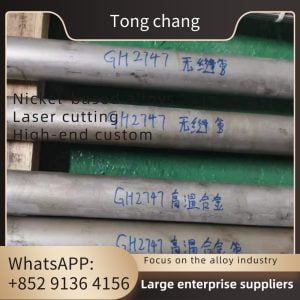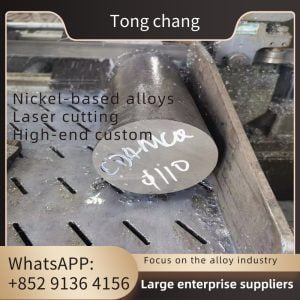| Material: | TP304/TP316L | NDT: | PT/HT/UT |
|---|---|---|---|
| Packaging: | Ply-wooden Case /Iron Case/ Bundle | Application: | Condeser |
| High Light: | Evaporator Stainless Steel Capillary Tubes, TP304 Stainless Steel Capillary Tubes, Seamless Stainless Capillary Tube | ||
Capillary Tubes For Refridgerators/ Condeser/Evaporator TP304 Stainless Steel Welded Tube
A capillary tube is nothing but a long, fixed-length tube with a very small diameter that is installed between the condenser and the evaporator. The capillary tube actually meters the refrigerant from the condenser to the evaporator.
The evaporator works the opposite of the condenser, here refrigerant liquid is converted to gas, absorbing heat from the air in the compartment. When the liquid refrigerant reaches the evaporator its pressure has been reduced, dissipating its heat content and making it much cooler than the fan air flowing around it.
The Benefits of Stainless Steel Capillary Tubing
High precision, seamless stainless steel capillary tubing is used in a wide range of instrumentation measurement applications. Based on heavy wall, small diameter construction (typically 1/8” or less), this tubing is used in critical applications from nuclear reactors to resistojets in aerospace.
Because high quality seamless capillary tube is made from a single homogeneous piece of steel with a continuous, uninterrupted grain structure, it is more suitable for applications which require consistent material throughout the tubing. Welds and mechanical fittings permit discontinuities that can encourage crevice corrosion and mechanical failure.
High quality stainless steel allows for the formation of a passive protective layer at the surface in the presence of oxygen. Poor heat treatment and welding can affect this layer by changing the critical chemical composition in the Heat Affected Area (HAZ) due to the different alloying elements having differing melting points.
Critical Uses
Technological advancements in the life sciences market have resulted in smaller assemblies working under increased operating pressures. Ultra-small diameter capillary tubing is crucial to the performance of High Performance and Ultra-Performance Liquid Chromatography (HPLC and UPLC) equipment. This capillary tubing, often with outside diameters less than 1/16th inch (1.59 mm) is used in many critical applications. In addition, seamless capillary tubing in crucial applications increases necessary sampling efficiencies.
HPLC is one of the most versatile analysis “tools” in the laboratory. Even so, there are common ‘hurdles’ many chromatographers face, such as; band broadening, poor resolution, and undesirable peak shapes. When selecting tubing for HPLC applications it is crucial to consider:
- Best material
- Best size
- Proper tubing preparation (flat, burr-free end and thru-hole centered cut)
Many of these applications require smooth-bore capillaries to limit Newtonian flow through the sample loop to ensure in a better sample read.
Certain specialized manufacturing techniques allow for critical product cleanliness required in these applications. Impurities, such as oil, grease and other foreign material leftover from the manufacturing process of stainless steel capillary tubing can result in cross-contamination and inaccurate sample readings. Conventional tubing typically requires additional cleaning on-site, prior to installation. To minimize the risk of cross-contamination and save time, special processes have been developed, during which tubing is subjected to high pressure and temperature cleaning immediately following the manufacturing process to remove residual impurities. This ensures tubing with fewer impurities and allows for sample integrity, providing repeatably consistent results.
Stainless Steel Capillary Tube Chemical Composition
The below table shows the chemical composition of the used for Stainless Steel Capillary Tube:
| STAINLESS STEEL CAPILLARY TUBE GRADES | UNS | C | Mn | P | S | Si | Cr | Ni | Mo | Ti | Nb | N |
| TP304 | S30400 | 0.08 | 2 | 0.045 | 0.03 | 1 | 18.0-20.0 | 8.0-11.0 | ||||
| TP304L | S30403 | 0.035 | 2 | 0.045 | 0.03 | 1 | 18.0-20.0 | 8.0-13.0 | ||||
| TP316 | S3160 | 0.08 | 2 | 0.045 | 0.03 | 1 | 16.0-18.0 | 11.0-14.0 | 2.0-3.0 | |||
| TP316L | S31603 | 0.035 | 2 | 0.045 | 0.03 | 1 | 16.0-18.0 | 10.0-14.0 | 2.0-3.0 |
Stainless Steel Capillary Tube Mechanical Properties
| Material | Heat | Temperure | Tensile Strength | Yield Strength | Elongation %, Min |
| Treatment | Min. | Ksi (MPa), Min. | Ksi (MPa), Min. | ||
| º F(º C) | |||||
| TP304 | Solution | 1900 (1040) | 75(515) | 30(205) | 35 |
| TP304L | Solution | 1900 (1040) | 70(485) | 25(170) | 35 |
| TP316 | Solution | 1900(1040) | 75(515) | 30(205) | 35 |
| TP316L | Solution | 1900(1040) | 70(485) | 25(170) | 35 |
Stainless Steel Capillary Tube Equivalent Grades
| GRADE | UNS NO | DIN/WERKSTOFF |
| Stainless Steel Capillary Tube 304 | S30400 | 1.4301 |
| Stainless Steel Capillary Tube 304L | S30403 | 1.4306 |
| Stainless Steel Capillary Tube 316 | S31600 | 1.4436 |
| Stainless Steel Capillary Tube 316L | S31603 | 1.4404 |
Applications
High precision capillary tube is used in many Instrumentation systems which include the use of:
- HPLC tubing
- UPLC tubing
- Coriolis tubing
- Remote seal pressure transmitter tubing
- Sheath tubing
- Hydraulic tubing
- Room air conditioners or through-wall air conditioners
- Portable air conditioners
- Portable dehumidifiers
- Residential freezer
- Residential refrigerators
- Refrigeration systems of various types in up to 6-tons of cooling capacity
Some applications require long lengths of stainless steel coil tubing where joints (welds or fittings) are not acceptable over long runs. However, there are many critical capillary applications which require short lengths of tubing.








